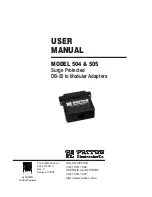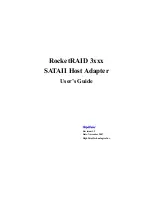
Tunneled VLAN and Mapped VLANS 10
If a single network is selected, the frames will be presented to the server NIC WITHOUT a VLAN
tag. In this case the host operating system does not need to understand which VLAN it resides in.
When the server transmits frames back to VC, those frames will not be tagged, however; Virtual
Connect will add the VLAN tag and forward the frame onto the correct VLAN.
2.
Select multiple networks – which would provide connectivity to several VLANs.
The Map VLAN Tags feature provides the ability to use a Shared Uplink Set to present multiple
networks to a single NIC. If you select Multiple Networks when assigning a Network to a server
NIC, you will have the ability to configure multiple Networks (VLANS) on that server NIC. At this
point VC tags ALL the packets presented to the NIC — unless the Native check box is selected for
one of the networks, in which case packets from this network (VLAN) will be untagged, and any
untagged packets leaving the server will be placed on this Network (VLAN).
With Mapped VLAN Tags, you can create a Shared Uplink Set that contains ALL the VLANs you
want to present to your servers, then present only ONE network (the one associated with the VLAN
we want the server NIC in) to the Windows, LINUX or the ESX Console NIC, then select Multiple
Networks for the NIC connected to the ESX vSwitch and select ALL the networks that we want
presented to the ESX host vSwitch. The vSwitch will then break out the VLANs and present them to
the guests. Using Mapped VLAN Tags minimizes the number of uplinks required.
In order to utilize the Multiple Networks feature of Virtual Connect, the Map VLAN Tags feature,
needs to be turned on under the Ethernet Settings/Advanced tab within the Virtual Connect
manager or the Virtual Connect CLI.
SUS - Restrictions and limitations
When configuring a Shared Uplink Set the following limitations apply;
•
64 VLANs per uplink (128 VLAN Support is provided in VC firmware 2.30 and later)
•
320 VLANs per module
•
28 VLANs to a server down link
•
Every VLAN on every uplink counts towards the 320-VLAN limit. If a Shared Uplink Set is comprised
of multiple uplinks, each VLAN on that Shared Uplink Set is counted multiple times
Benefits of a SUS
A Shared Uplink Set can be configure to support both tagged and un-tagged network traffic to a server
NIC, which simplifies the overall configuration and minimizes the number of uplink cables required to
support the network connections.
Tunnel vs. Map VLAN tags setting
It is important to note that the behavior of both vNets and Shared Uplink Sets is dependent on whether
VLAN Tunnel or Map VLAN Tags is set. Server VLAN Tagging Support, as configured in the “Advanced
Ethernet Settings” tab of Virtual Connect is a Domain wide configuration.
If Virtual Connect is set to Tunnel Mode, you can do the following;
•
Create a Shared Uplink Set – which can support several VLANs up to the publish limits
•
These VLANs can be presented to a Server NIC, one at a time – No multiple VLANS supported,
frames are presented to the NIC untagged
•
Create a vNet – which can support both TAGGED or UNTAGGED frames, if tagged the host system
will need to interpret those tags











































